As is the international norm, the May Day holiday just past should have been swept up in music festivals. But for now, most music lovers will have to pretend to be there.
The Coachella Festival, held in the California desert not too long ago, had people drooling with anticipation.
Not only is the lineup bolstered by Bili, The Weeknd, and Garrett Wang, but there's also a group of hot guys and girls walking under the sun and palm trees, with a youthful freedom that can't wait to penetrate the phone screen in front of you.
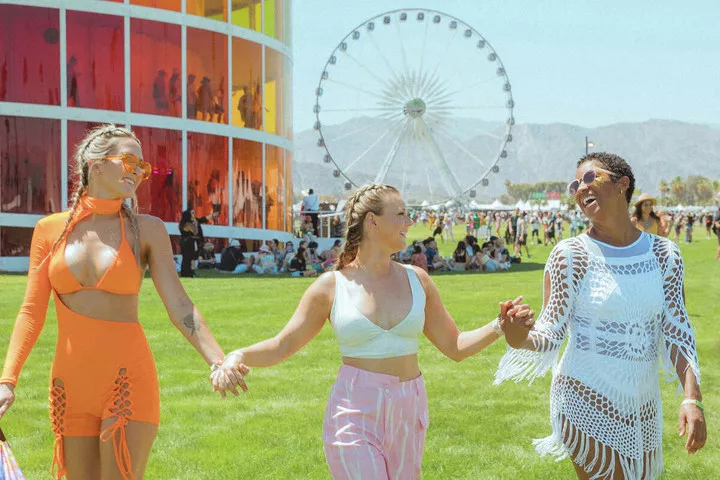
The hormones and excitement of the scene are similar. But few people will notice that, unlike domestic music festivals, there are always some "atmosphere groups" dancing on both sides of the stage at American music festivals.
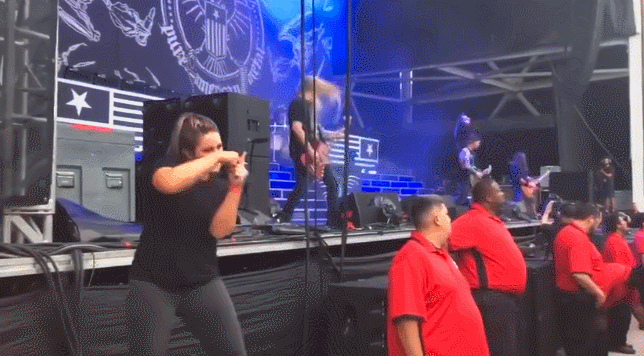
Don't get me wrong, they're not back-up dancers or strangely disorganized audience members, but sign language interpreters who help the hearing-impaired audience 'hear' the music.
Faster mouth than rapper, more like the atmosphere group than the atmosphere group
When it comes to sign language interpreters, you may first think of CCTV news and the love affair between host Zhu Guangquan and his sign language teacher.
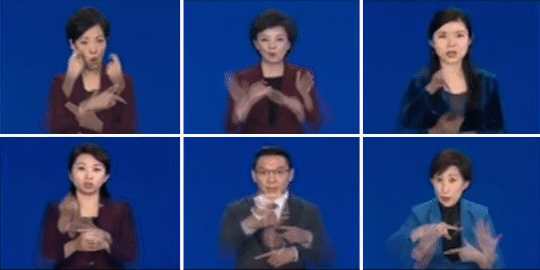
But if you ask on social media platforms like Twitter and TikTok, users will point you in the right direction and tell you that the godlike sign language teachers are not on news channels or meeting with dignitaries, they are on the festival grounds.
They are always enthusiastic and on fire, no matter if the rocker on stage is howling a landslide or the rapper is pushing the limits of human beings to deliver hot-mouthed lyrics, they can translate at superb speed while still swaying to the rhythm of the music.
Holly Maniatty is one of the music sign language interpreters who has been anointed by social networks.
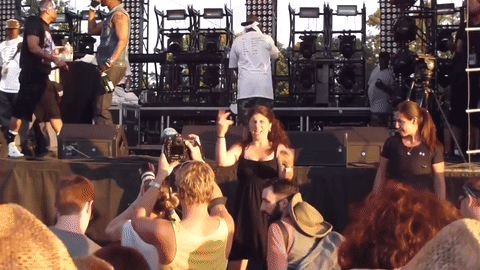
▲ Maniatty at the Wu-Tang Clan concert
She has nearly 20 years of translation experience and has worked with hip-hop greats like Wu-Tang Clan, Jay Z, and Kanye West. One of her most notable collaborations was in 2018, when she translated Eminem's "Rap God" live and slayed the entire audience, causing it to go viral.
The song was certified by Guinness World Records as the 'most worded hit', with 1,560 words in just 6 minutes and 3 seconds. Some users laughed at Maniatty's fast hands like he was paying homage to Naruto.

With her bright pink hair and passionate, full-bodied performance, Amber Galloway Gallego has also become a big name in the field.
Gallego has been working with artists such as Eminem, Adele, Drake, Lady Gaga and Snoop Dogg, and has even been called the "Jay-Z of hip-hop sign language" by one magazine.
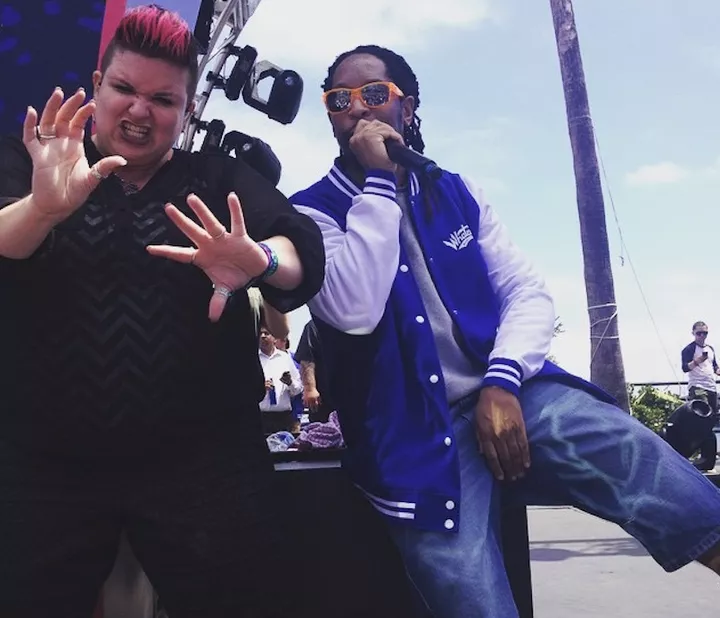
In 2019, she stole the rapper's thunder by working as a sign language interpreter for rapper Twista, who is considered by Guinness World Records to be the fastest-mouthed rapper ever, singing 280 words a minute, but Gallego didn't drop the ball at all and delivered a show-stopping performance.
And Kelly Kurdi went viral because it was straightforward and bold.
At last year's Lollapalooza festival, she translated for Cardi B's live set, and because the lyrics themselves had some 18 forbidden content, Kurdi chose to translate them as they were and show them through movement. The video eventually became a TikTok hit, with over 14 million views in a week.
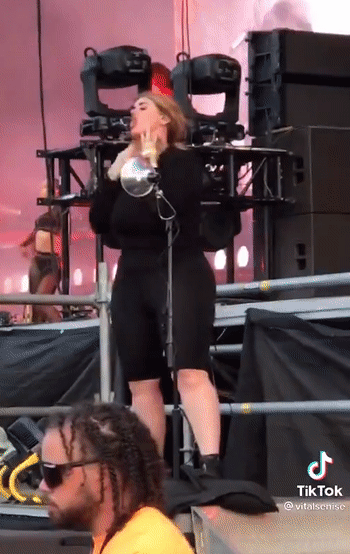
Maniatty, Gallego and Kurdi all have professional certifications related to American Sign Language (ASL), but unlike everyday sign language interpreters, they all specialize in live music interpretation.
In addition to real-time translation of lyrics and interaction with the singers on stage, they are also conveying infectious emotions and rhythms to help the hearing impaired audience understand the performance. With busy hand movements, spot-on facial expressions, and body language that swayed to the rhythm, a great musical performance was 'heard'.
The new generation of rap is the one that makes everyone "hear"
When you see this, you may wonder: why do music festivals need sign language interpreters? Do hearing-impaired people go to music festivals too? Can they hear the music?
If you've also seen the movie "The Girl Who Could Hear", you'll remember this part - on stage, the heroine is singing a lyrical song with her partner; off stage, her deaf parents and brother are looking around in bewilderment because they can't hear at all, and they don't know how to match the beat.
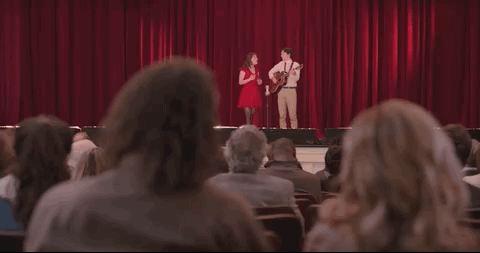
But there's also a scene in the movie where the dad picks up the heroine from school in his truck with the music cranked up in the car, and he says "I like to hear sing-along music and I can feel my whole butt vibrating."
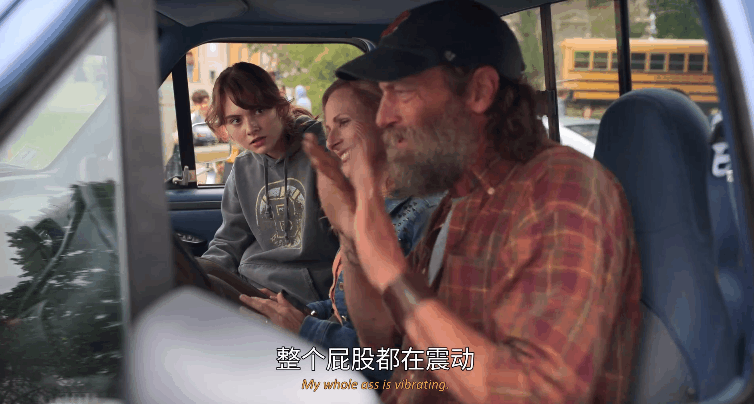
In fact, the hearing impaired community is so diverse that some can hear low frequency sounds (like drums and bass) but cannot pick up the relatively high frequency of vocals and guitars. Sometimes hearing aids and cochlear implants can be the solution, but even deaf people with severe hearing loss can pick up vibrations through their skin and dance to the beat their bodies feel.
To better 'hear' the music, hearing-impaired people will feel the vibrations from the floor under their feet with bare feet and no shoes, hold a balloon or half-filled water bottle and catch the rhythm with the palm of their hand, or even stand near the speakers and immerse themselves fully in the rhythm.

▲ Some festivals now also offer vibration-enhancing 'vests' for the hearing-impaired, which allow live music to be felt through chest straps, ankles and wristbands
Apple Music has invited several hearing-impaired people to compile a list of songs. Most of their heartfelt recommendations were songs with low to mid-range frequencies and distinct rhythms and beats.
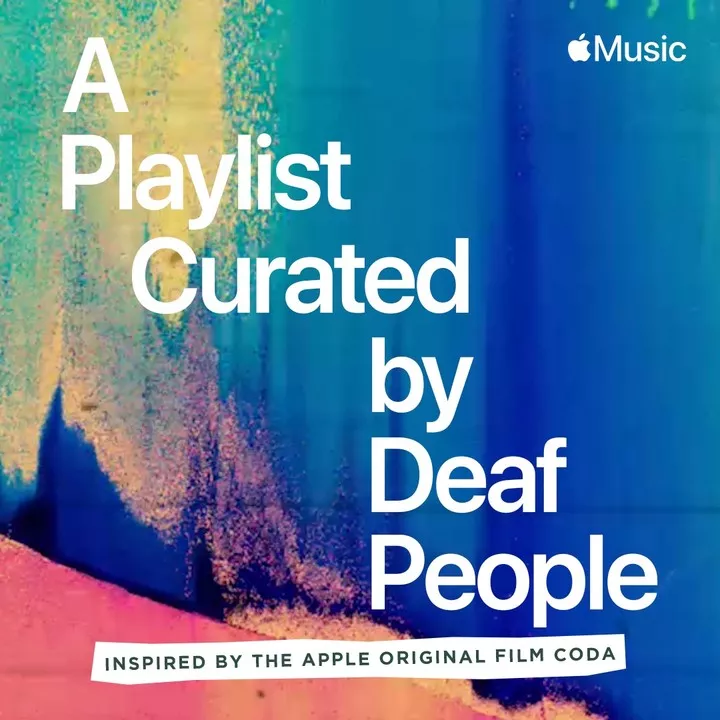
But the thing about listening to music is that it shouldn't stop at just feeling the vibrational frequencies.
In 1990, the Americans with Disabilities Act (ADA) was enacted, requiring that sign language interpreters be provided at concerts, concerts, and live houses. This is a fundamental right guaranteed by law to the hearing impaired and is the main reason why Maniatty and Gallego were later given a "place" on both sides of the stage.
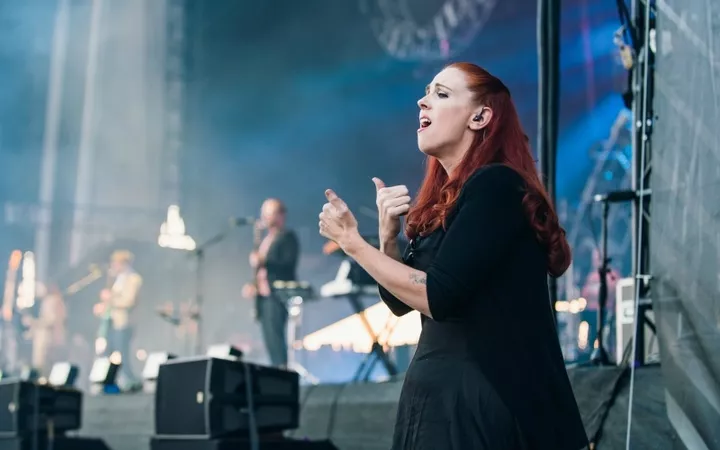
Despite the early introduction of the bill, for a longer period of time, the music scene hired sign language interpreters similar to the CC captions you get at home watching movies -
They calmly and composedly translate the lyrical text while ignoring the song's atmosphere and instrumentation, even telling you only that it's 'music' 'energetic music' 'sad music' during the intro interlude.
Gallego, who is hearing impaired due to spinal meningitis, still remembers her first concert with her hearing impaired friends as "boring as a town hall meeting". And that's how she found her calling.

▲ Two translations: the left is vocal and the right blandly tells you the segment is 'music'. Which one would you be more attracted to?
For those who don't know, they may think that sign language is limited to hand movements, but in fact mouth shape, facial expressions and body language, are all important components.
Using a specific track as an example, Gallego would translate the lyrical text into American Sign Language expressions, using playing movements to represent the sound of the instrument and presenting pitch levels through changes in hand position. Throughout, facial expressions and body language are used in tandem, all of which are very helpful in conveying the emotional message.
It's all about providing 'context' for hearing-impaired people to understand the music.

▲ Playing Air Guitar, Basic Skills for Music Sign Language Interpreters
However, a live music sign language interpretation is much more complicated than that. Behind the on-stage performance can be up to a month or even three months of preparation.
Because the live set list is likely to be officially finalized 10 minutes before the show, sign language interpreters like Maniatty and Gallego have to put in the effort to do their homework ahead of time.
They will research the singer's personal experience, cultural background and singing style, using past performances to speculate on the most likely composition of the song list. Then it's a matter of listening to the songs over and over again, digesting the lyrics, understanding the creative intent behind them, then choreographing a full sign language translation, and even mimicking the singer's own body language.
The next step is to practice like crazy to make this into body memory. In extremely difficult performance situations like rap, there are usually two interpreters to work with.
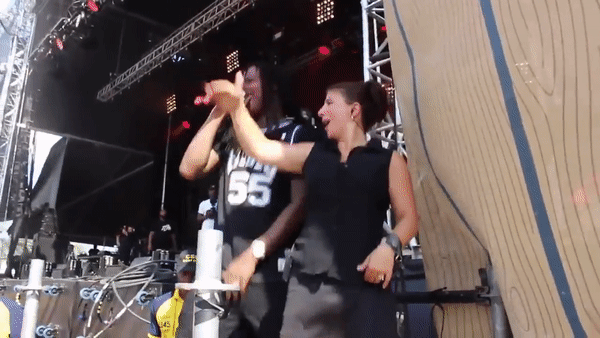
▲ Maniatty In the scene, sometimes singers also interact with sign language interpreters
Dress is also a very important detail. Because sign language is a visual language, sign language interpreters typically wear simple, solid-colored clothing in order to allow the audience to see the gestures.
Those with lighter skin tones, like Maniatty, tend to wear black. And the black sign language interpreter Matt Maxey, known as the "deaf version of Kanye West" on the right in the photo below, chose a white t-shirt.
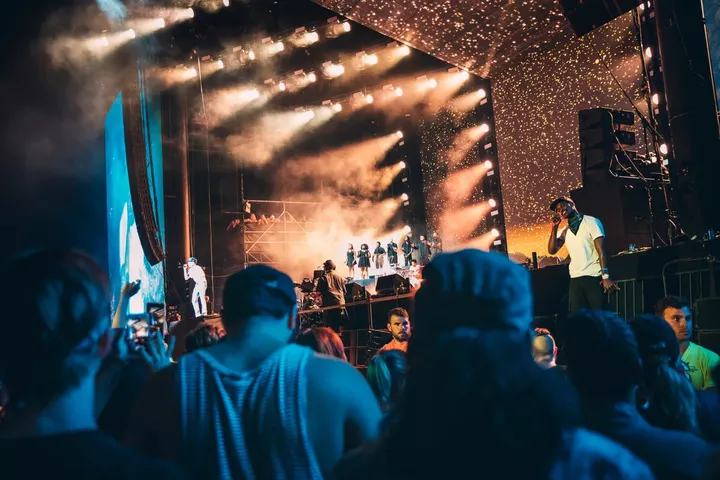
For the hearing audience, the sign language interpreters at the festival might be a bit of a cool/funny/hunting presence.
But in the eyes of hearing-impaired audiences, they are an important part of what shows the appeal of music and brings power and empathy.
Sign language is not "cool", it's a real language
Both Maniatty and Gallego feel good about the attention the Internet has brought.
They have been interviewed by the media, appeared as guests on Jimmy Fallon's show, The Tonight Show with Jimmy Fallon, and appeared on platforms like Ted Talk to share their hopes of inspiring more people to take an interest in sign language and people with hearing loss.
Like hearing audiences, deaf audiences are ticket buyers, they are fans, and they want to enjoy a festival or concert properly. They have been alienated for much of their lives by their inability to hear, and they fight for their rights every day.
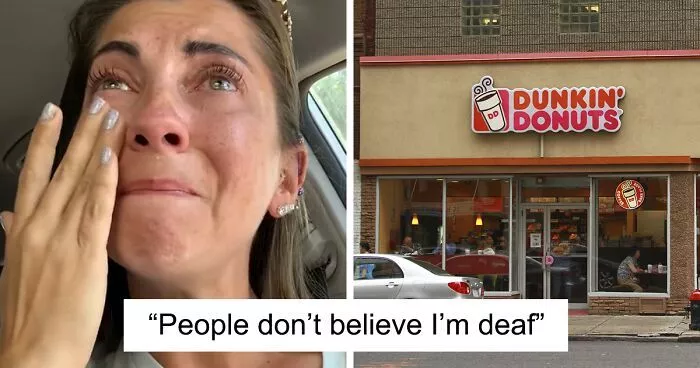
▲ Last September, a hearing-impaired TikTok user cried about being denied service, saying restaurant staff refused to communicate with her with pen and paper and wouldn't take off her mask to let her read her lips
She argues that short videos that are 'deified' by super-fast hand speeds and 18 forbidden movements out of the ring can actually be misleading for the masses - people are in awe of the sign language performance, but it's easy to miss that it's actually a rich and complex natural language.
Caroline Zola, editor of Slate.com, reflects on the direction of media coverage.
She said that sign language interpreters should be a tool for the hearing-impaired community to enjoy the performance and should not turn the interpreters themselves into performers. The media should focus more on the realities behind it, such as deaf discrimination, cochlear implants and the silencing of minority groups.
When we use the term 'cool' to describe sign language, we are effectively alienating and avoiding it.
Sign language, like English, has its own grammatical rules, morphology, semantics, etc. It is not "cool" or "funny" or "awesome", but a practical and evolving form of communication. It deserves as much respect as any spoken language.
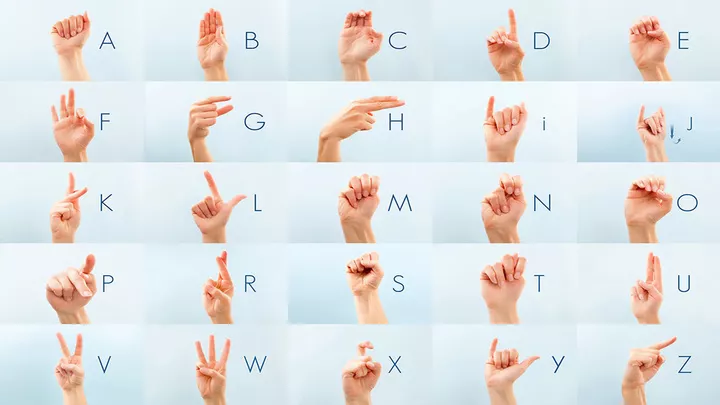
▲ American Sign Language Alphabet Signs. Sign language is a highly local language, and different regions of the country often have their own sign language systems.
Some users also questioned the flamboyant style of these musical sign language interpreters: how do I know if they're gesturing blindly?
Deaf netizen Kamp Gumerson said that there is a lack of standardization in sign language interpretation in music, with interpreters going by their own interpretation of the lyrics. He has seen dozens of musical sign language interpreters and can only get 10 to 40 percent of them.
Lyrics like hip-hop rap have a lot of slang, and it's not easy to keep up with the fast pace and translate it into place. In order to be better understood by the hearing audience, responsible sign language interpreters, often get their deaf friends to discuss and rehearse.
And with sign language interpreters becoming a standard in the music scene, more and more deaf people are now joining this niche profession. They work live alongside sign language interpreters who can hear the music, providing a deeper understanding of the deaf community and outputting expressions that are more in line with the everyday use of deaf people.
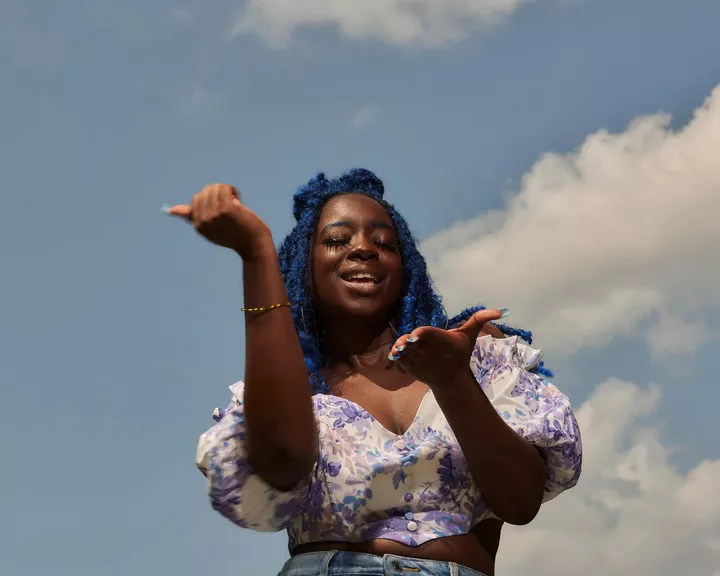
▲ American Sign Language dancer Raven Sutton cautions that the color and cultural diversity of sign language interpreters is also important. Photo from NYTimes
In any case, the energy that sign language interpreters bring to the music scene is tremendous.
Hearing impaired Becky, in an interview with Australian media ABC that although she couldn't hear the lyrics, she still enjoyed going to the festival, especially when there were enthusiastic, fast and fluent sign language interpreters on hand.
People often say that life without music is unimaginable, and I can't imagine life without sign language interpreters. Their interpreters have made me love music even more!
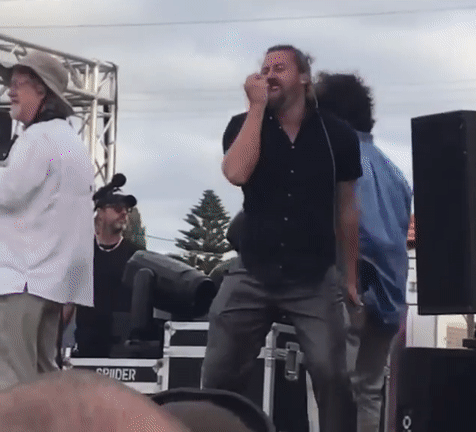
Kurdi, who became popular for her large-scale translations, also said that seeing a sign language interpreter at a festival or concert shouldn't be shocking and that it should be the norm.
In addition, she also noted that the internet has opened up some new possibilities, such as the emergence of platforms like TikTok and Instagram, which enable hearing-impaired creators to find more space to showcase themselves.
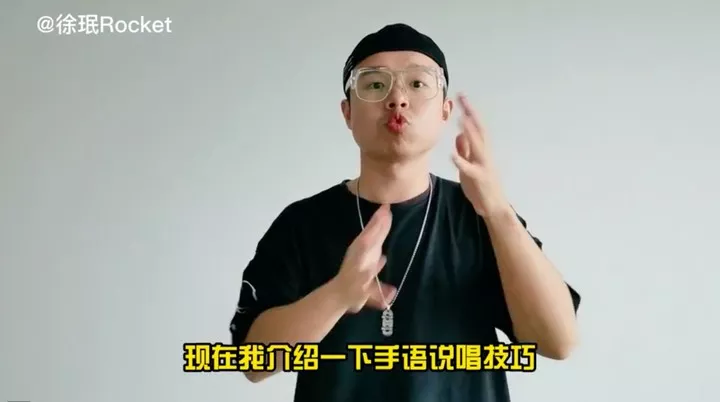
▲ Domestic internet platforms are also a place for hearing-impaired creators to showcase themselves, such as Xu Min, who likes to rap in sign language
This year, for the first time, a sign language interpreter was on hand at the awards ceremony when "The Girl Who Could Hear" took home the 94th Academy Award for Best Picture. Likewise, Gallego and her companions were hard at work in front of the cameras on the Grammy's red carpet set.
All these are bringing more mainstream attention and wider impact to the hearing impaired population.
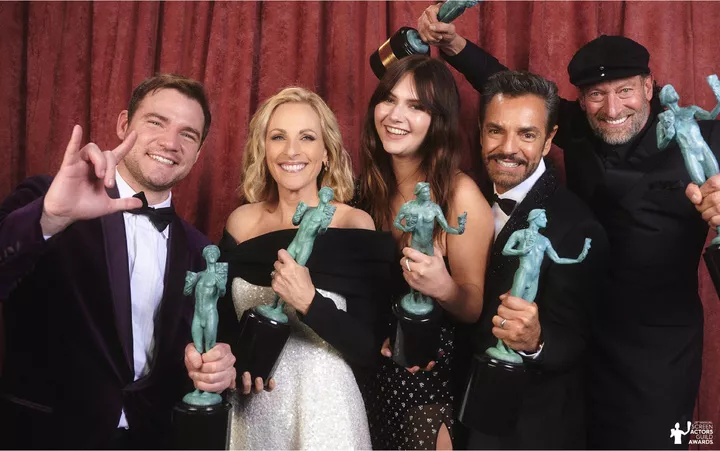
▲ The starring team of the movie "Kin Listening Girl
Whether it's the sign language interpreters on stage, the hearing-impaired audience on stage, or the hearing-impaired creators active in music, dance, film, etc., all share a common goal and hope. As Becky said.
Sign language is a real language and it should not be an internet curiosity or a laughing stock. It would be equality to see it appear in more settings with higher quality translations.